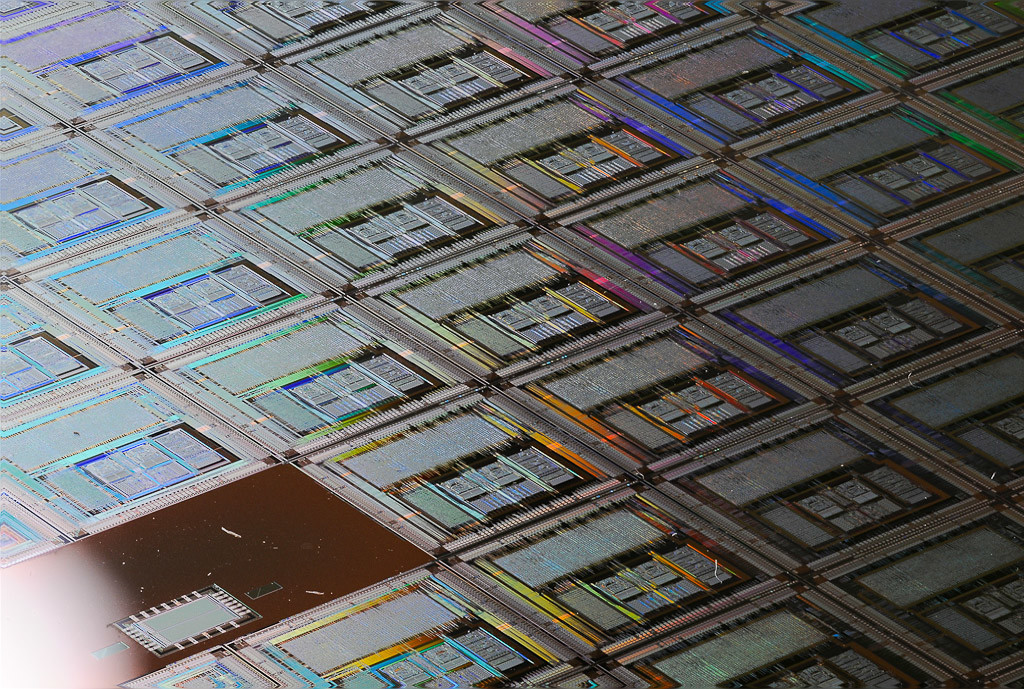1.2.2.3: Central Processing Unit (CPU)
- Page ID
- 39377
\( \newcommand{\vecs}[1]{\overset { \scriptstyle \rightharpoonup} {\mathbf{#1}} } \)
\( \newcommand{\vecd}[1]{\overset{-\!-\!\rightharpoonup}{\vphantom{a}\smash {#1}}} \)
\( \newcommand{\id}{\mathrm{id}}\) \( \newcommand{\Span}{\mathrm{span}}\)
( \newcommand{\kernel}{\mathrm{null}\,}\) \( \newcommand{\range}{\mathrm{range}\,}\)
\( \newcommand{\RealPart}{\mathrm{Re}}\) \( \newcommand{\ImaginaryPart}{\mathrm{Im}}\)
\( \newcommand{\Argument}{\mathrm{Arg}}\) \( \newcommand{\norm}[1]{\| #1 \|}\)
\( \newcommand{\inner}[2]{\langle #1, #2 \rangle}\)
\( \newcommand{\Span}{\mathrm{span}}\)
\( \newcommand{\id}{\mathrm{id}}\)
\( \newcommand{\Span}{\mathrm{span}}\)
\( \newcommand{\kernel}{\mathrm{null}\,}\)
\( \newcommand{\range}{\mathrm{range}\,}\)
\( \newcommand{\RealPart}{\mathrm{Re}}\)
\( \newcommand{\ImaginaryPart}{\mathrm{Im}}\)
\( \newcommand{\Argument}{\mathrm{Arg}}\)
\( \newcommand{\norm}[1]{\| #1 \|}\)
\( \newcommand{\inner}[2]{\langle #1, #2 \rangle}\)
\( \newcommand{\Span}{\mathrm{span}}\) \( \newcommand{\AA}{\unicode[.8,0]{x212B}}\)
\( \newcommand{\vectorA}[1]{\vec{#1}} % arrow\)
\( \newcommand{\vectorAt}[1]{\vec{\text{#1}}} % arrow\)
\( \newcommand{\vectorB}[1]{\overset { \scriptstyle \rightharpoonup} {\mathbf{#1}} } \)
\( \newcommand{\vectorC}[1]{\textbf{#1}} \)
\( \newcommand{\vectorD}[1]{\overrightarrow{#1}} \)
\( \newcommand{\vectorDt}[1]{\overrightarrow{\text{#1}}} \)
\( \newcommand{\vectE}[1]{\overset{-\!-\!\rightharpoonup}{\vphantom{a}\smash{\mathbf {#1}}}} \)
\( \newcommand{\vecs}[1]{\overset { \scriptstyle \rightharpoonup} {\mathbf{#1}} } \)
\( \newcommand{\vecd}[1]{\overset{-\!-\!\rightharpoonup}{\vphantom{a}\smash {#1}}} \)
\(\newcommand{\avec}{\mathbf a}\) \(\newcommand{\bvec}{\mathbf b}\) \(\newcommand{\cvec}{\mathbf c}\) \(\newcommand{\dvec}{\mathbf d}\) \(\newcommand{\dtil}{\widetilde{\mathbf d}}\) \(\newcommand{\evec}{\mathbf e}\) \(\newcommand{\fvec}{\mathbf f}\) \(\newcommand{\nvec}{\mathbf n}\) \(\newcommand{\pvec}{\mathbf p}\) \(\newcommand{\qvec}{\mathbf q}\) \(\newcommand{\svec}{\mathbf s}\) \(\newcommand{\tvec}{\mathbf t}\) \(\newcommand{\uvec}{\mathbf u}\) \(\newcommand{\vvec}{\mathbf v}\) \(\newcommand{\wvec}{\mathbf w}\) \(\newcommand{\xvec}{\mathbf x}\) \(\newcommand{\yvec}{\mathbf y}\) \(\newcommand{\zvec}{\mathbf z}\) \(\newcommand{\rvec}{\mathbf r}\) \(\newcommand{\mvec}{\mathbf m}\) \(\newcommand{\zerovec}{\mathbf 0}\) \(\newcommand{\onevec}{\mathbf 1}\) \(\newcommand{\real}{\mathbb R}\) \(\newcommand{\twovec}[2]{\left[\begin{array}{r}#1 \\ #2 \end{array}\right]}\) \(\newcommand{\ctwovec}[2]{\left[\begin{array}{c}#1 \\ #2 \end{array}\right]}\) \(\newcommand{\threevec}[3]{\left[\begin{array}{r}#1 \\ #2 \\ #3 \end{array}\right]}\) \(\newcommand{\cthreevec}[3]{\left[\begin{array}{c}#1 \\ #2 \\ #3 \end{array}\right]}\) \(\newcommand{\fourvec}[4]{\left[\begin{array}{r}#1 \\ #2 \\ #3 \\ #4 \end{array}\right]}\) \(\newcommand{\cfourvec}[4]{\left[\begin{array}{c}#1 \\ #2 \\ #3 \\ #4 \end{array}\right]}\) \(\newcommand{\fivevec}[5]{\left[\begin{array}{r}#1 \\ #2 \\ #3 \\ #4 \\ #5 \\ \end{array}\right]}\) \(\newcommand{\cfivevec}[5]{\left[\begin{array}{c}#1 \\ #2 \\ #3 \\ #4 \\ #5 \\ \end{array}\right]}\) \(\newcommand{\mattwo}[4]{\left[\begin{array}{rr}#1 \amp #2 \\ #3 \amp #4 \\ \end{array}\right]}\) \(\newcommand{\laspan}[1]{\text{Span}\{#1\}}\) \(\newcommand{\bcal}{\cal B}\) \(\newcommand{\ccal}{\cal C}\) \(\newcommand{\scal}{\cal S}\) \(\newcommand{\wcal}{\cal W}\) \(\newcommand{\ecal}{\cal E}\) \(\newcommand{\coords}[2]{\left\{#1\right\}_{#2}}\) \(\newcommand{\gray}[1]{\color{gray}{#1}}\) \(\newcommand{\lgray}[1]{\color{lightgray}{#1}}\) \(\newcommand{\rank}{\operatorname{rank}}\) \(\newcommand{\row}{\text{Row}}\) \(\newcommand{\col}{\text{Col}}\) \(\renewcommand{\row}{\text{Row}}\) \(\newcommand{\nul}{\text{Nul}}\) \(\newcommand{\var}{\text{Var}}\) \(\newcommand{\corr}{\text{corr}}\) \(\newcommand{\len}[1]{\left|#1\right|}\) \(\newcommand{\bbar}{\overline{\bvec}}\) \(\newcommand{\bhat}{\widehat{\bvec}}\) \(\newcommand{\bperp}{\bvec^\perp}\) \(\newcommand{\xhat}{\widehat{\xvec}}\) \(\newcommand{\vhat}{\widehat{\vvec}}\) \(\newcommand{\uhat}{\widehat{\uvec}}\) \(\newcommand{\what}{\widehat{\wvec}}\) \(\newcommand{\Sighat}{\widehat{\Sigma}}\) \(\newcommand{\lt}{<}\) \(\newcommand{\gt}{>}\) \(\newcommand{\amp}{&}\) \(\definecolor{fillinmathshade}{gray}{0.9}\)Central Processing Unit (CPU)

Once data has been entered into a computer, it is acted on by the CPU, which is the real brain of the computer. The CPU takes specific program instructions (usually one at a time), applies them to the input data and transforms the input into output.
To understand the role of the CPU in data processing through an agricultural lens, let's draw parallels between this critical component of a computer and the various functions and processes on a farm:
1. The CPU as the Farm Manager:
Think of the CPU as the farm manager or the head farmer. Just as the farm manager oversees and directs the operations on the farm, the CPU is responsible for processing and managing data. The farm manager receives specific instructions or plans (e.g., crop planting schedules, irrigation plans) and applies them to the farm's resources (land, equipment, labor). Similarly, the CPU takes program instructions and applies them to the input data to generate meaningful output.
2. Program Instructions as Farming Tasks:
Program instructions are akin to the specific tasks or directives given to the farm manager. These instructions could include tasks like planting seeds, watering crops, or harvesting. For instance:
- Planting Seeds: Just as a specific instruction might be to plant a certain type of seed in a particular field, a CPU instruction might be to perform a calculation or process a piece of data.
- Irrigation Plans: An irrigation plan could be compared to a set of instructions that tells the CPU how to manage and transform data, ensuring crops receive the right amount of water based on current conditions.
3. Input Data as Raw Materials:
The input data entered into the computer is similar to raw materials on a farm, such as seeds, soil, and water. Just as these materials need to be processed and managed to grow crops, input data needs to be processed by the CPU to produce useful results. For example:
- Seeds: Representing raw data that needs careful handling and placement, just like how input data is carefully processed by the CPU.
- Soil and Water: Essential resources that support the growth of crops, much like how input data provides the foundation for the CPU’s processing tasks.
4. Output as Farm Products:
The output generated by the CPU is analogous to the end products of farming, such as harvested crops or livestock. After processing the raw materials (seeds, soil, water) and applying specific instructions, the farm manager yields final products that are ready for market or consumption. Similarly, the CPU transforms input data into output that can be used for various purposes, such as generating reports, making decisions, or displaying information.
5. Processing Efficiency and Optimization:
In agriculture, the efficiency of processes and the optimal use of resources are crucial for maximizing yields. Similarly, the efficiency of the CPU in processing instructions and handling data is critical for the overall performance of the computer system. A well-optimized farm might use modern techniques and equipment to improve productivity, just as a computer with a powerful and well-tuned CPU can process data more quickly and effectively.
6. Specialized Tasks and Equipment:
Just as different tasks on a farm might require specialized equipment (e.g., tractors for plowing, combines for harvesting), the CPU handles various types of instructions and tasks through its processing capabilities. Specialized CPUs or processors might be used for different applications, such as high-performance computing for complex calculations, much like how specialized farm equipment is used for specific agricultural tasks.
In Summary:
The CPU in a computer functions similarly to a farm manager in an agricultural setting. It takes input data (raw materials), applies specific instructions (farming tasks), and transforms the input into output (final products). The efficiency and effectiveness of this process are crucial, just as they are in agriculture, where optimizing the use of resources and equipment leads to successful outcomes. Each component of the system, whether it’s the CPU or the farm manager, plays a critical role in ensuring that the overall operation runs smoothly and effectively.

